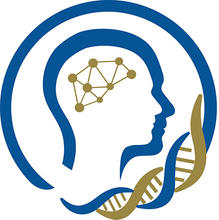Summary
The study of human factors in forensic science informs our understanding of the interaction between humans and the systems they use. The Expert Working Group (EWG) on Human Factors in Forensic DNA Interpretation used a systems approach to conduct a scientific assessment of the effects of human factors on forensic DNA interpretation with the goal of recommending approaches to improve practice and reduce the likelihood and consequence of errors. This effort resulted in 44 recommendations. The EWG designed many of these recommendations to improve the production, interpretation, evaluation, documentation, and communication of DNA comparison results.
This work was sponsored by the National Institute of Justice (NIJ) Office of Investigative and Forensic Sciences (OIFS) and the National Institute of Standards and Technology (NIST) Special Programs Office.
The final product of this Expert Working Group is now available: Forensic DNA Interpretation and Human Factors: Improving Practice Through a Systems Approach.
Description

Forensic DNA interpretation is widely regarded as a critical tool in modern criminal investigations, often seen as the gold standard of forensic evidence due to its potential to help link individuals to crime scenes. The process begins with the collection and preservation of DNA samples—from blood to skin cells—which are then subjected to extraction, quantification, and profiling through methods like Polymerase Chain Reaction (PCR) and Short Tandem Repeats (STR) analysis. Interpreting and comparing DNA profiles may then help to identify a person of interest or help to exonerate an innocent person. However, the reliability of forensic DNA interpretation is not without question. Issues of contamination and the complexities of interpreting profiles, especially in cases involving degraded DNA or mixtures from multiple individuals, introduce the potential for error. Furthermore, there is significant variation in how different forensic science service providers (FSSPs) collect, interpret, and communicate DNA results, as well as how DNA analysts are trained and monitored.
The EWG first convened in February 2020 and comprised an international group of forensic science experts in DNA interpretation (working as sole practitioners or for FSSPs), academics in forensic science and law, statisticians, cognitive scientists, and representatives of professional organizations and standards developing organizations. The EWG was charged with examining human factors as they relate to current policies, procedures, and practices within the field of forensic DNA interpretation. Furthermore, it was to develop practices based on scientifically sound research to reduce the likelihood of errors in forensic DNA interpretation and publish its findings in a report. This final report covers a variety of topics and includes discussion and recommendations on:
- The potential for cognitive bias and how to reduce it.
- DNA transfer, persistence, prevalence, and recovery.
- Work environments and management and leadership structures and how they can impact productivity and morale.
- Building a more equipped workforce through investment in centralized forensic education and training.
- How forensic science service provider management and leadership can foster a culture where errors are seen as a learning opportunity and not treated punitively.
- Future research and funding directions in forensic DNA interpretation
This report serves to educate both forensic science service providers and criminal justice partners (e.g., legal practitioners, law enforcement investigators, parent organization leadership, forensic science educators).
AUTHORS:
The Expert Working Group on Human Factors in Forensic DNA Interpretation
Kaye Ballantyne, PhD, Dawn Moore Boswell, JD, Thomas A. Busey, PhD, Alex Chaparro, PhD, Brenda Danosky, BS, Lynn Garcia, JD, Catherine M. Grgicak, PhD, Tacha Hicks, PhD, Clinton Hughes, JD, David H. Kaye, JD, MS, Jarrah R. Kennedy, MSFS, Bas Kokshoorn, PhD, Glenn Langenburg, PhD, Michelle Madrid, MS, Kristy A. Martire, PhD, Kayleigh Matook, MS, Britton Morin, MSFS, Craig O’Connor, PhD, Erica L. Romsos, MFS, Tiffany Roy, MSFS, JD, Timothy P. Scanlan, PhD, Angela Spessard, MSFS, Adele Quigley-McBride, PhD, Jody M. Wolf, MS, MBA, Sandy Zabell, PhD.
Steering Committee
Melissa Taylor, BA, Nikola Osborne, PhD, Mikalaa Martin, BS, Hope Zagaria, MSFS, Tracey L. Johnson, MSFS.
SUGGESTED CITATION:
Expert Working Group on Human Factors in Forensic DNA Interpretation (2024). Forensic DNA Interpretation and Human Factors: Improving Practice Through a Systems Approach. National Institute of Standards and Technology, Gaithersburg, MD, NIST IR 8503. https://doi.org/10.6028/NIST.IR.8503
Potential updates and corrections to the report are now being tracked in this Excel file.
OTHER RELATED LINKS:
Human Factors in Forensic Sciences Expert Working Group Series | NIJ
DNA Mixture Interpretation: A NIST Scientific Foundation Review | NIST
2022 Human Forensic DNA Analysis (Current Practice) Process Map (OSAC)

